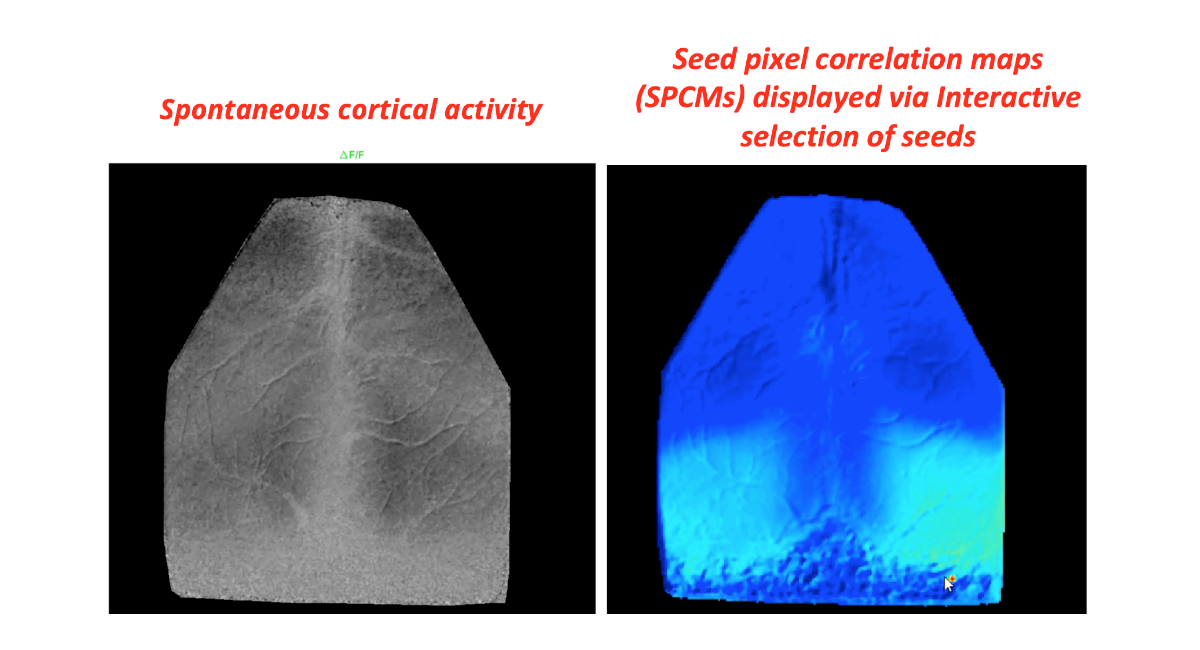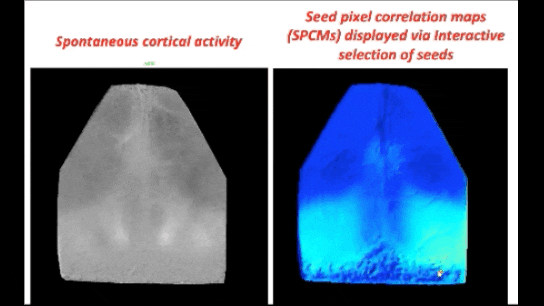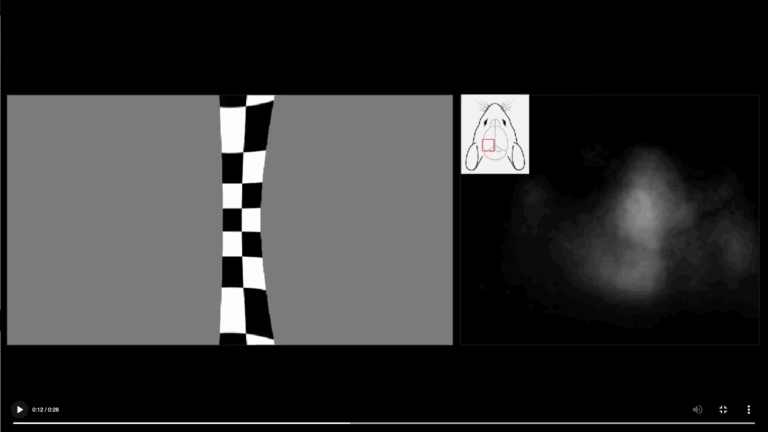
MediLumine Launches Full Spectrum CRO Services
We are pleased to announce the expansion of our contract research services into a full spectrum model that unifies imaging and omics platforms within a

In their excellent review article titled ‘Not so spontaneous: Multi-dimensional representations of behaviors and context in sensory areas’ (ref. https://www.cell.com/neuron/pdf/S0896-6273(22)00588-8.pdf), Avitan and Stringer propose that spontaneous activity aid the neural circuit in combining several internal and external factors to regulate moment-by-moment adaptive behavior. They also conclude recent techniques such as large-scale fluorescent calcium imaging will help to dissect the functional role of spontaneous activity.
The left video videos below are resting state recordings of anesthetized GCaMP6-Thy1 mouse imaged with the LightTrack OiS200 Mesoscope.
A seed-pixel correlation analysis (right movie) reveals the connectivity between functional modules given that functionally-linked areas are temporally correlated.

In brief, this map helps neuroscientists to better understand how the cortical networks interact with each other and how these interactions are impacted by some sort of perturbation of the system such a stroke or a drug.
Here is some more information on the LightTrack OiS200 Mesoscope that has helped me save hundred of hours in the lab building a customized imaging rigs for specifiy applications through it’s various input/output auxiliary ports that allow for integration of accessories used in behavioral studies.

We are pleased to announce the expansion of our contract research services into a full spectrum model that unifies imaging and omics platforms within a

The visual system of mammals is organized so that each section of the visual field is processed by a corresponding region of the brain. This